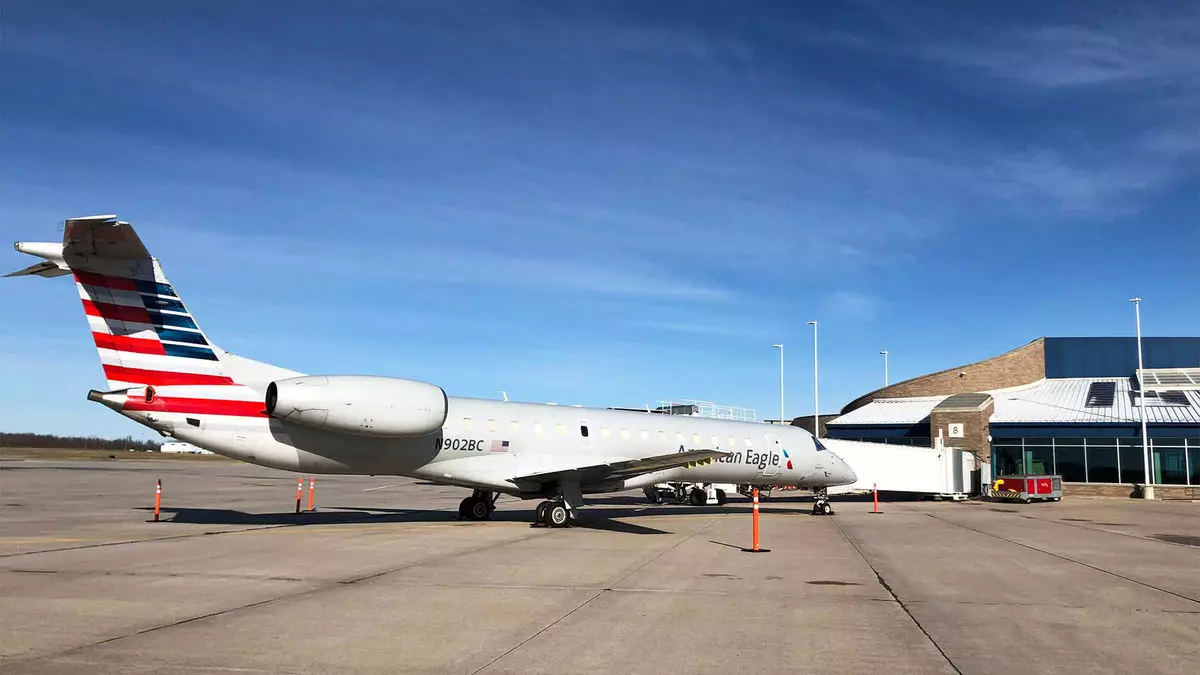Appleton Airport, located in northeastern Wisconsin, is a vital hub for both leisure and business travelers in the region. Before the pandemic, it served as a key access point for air travel, connecting the roughly 250,000 residents of the Appleton metropolitan area with major destinations across the United States. However, like many small airports across the U.S., Appleton was not immune to the turbulence caused by the COVID-19 pandemic. The aftermath saw a significant decline in available flights and service frequency due to an acute shortage of pilots, leading major airlines to ground regional aircraft.
Despite these challenges, recent developments signal a positive shift for Appleton Airport. In June, the airport celebrated the launch of its inaugural service to Dallas-Fort Worth by American Airlines using an American Eagle-branded regional jet. This addition is significant as it represents a recovery strategy by major airlines to reinvigorate route offerings. Over the past year, American Airlines has also resumed service to Charlotte, bolstering the airport’s connectivity. Moreover, both Delta and United Airlines have expanded their regional flight offerings, contributing to a notable 33% growth in major airline frequencies at Appleton.
This resurgence is particularly impressive when considering the sharp decline experienced during the pandemic. Data from Cirium reveals that Appleton saw a staggering 31% drop in major airline flights from October 2021 to October 2023. However, the latest figures indicate that the flight count from American, Delta, and United has rebounded to 92% of pre-pandemic levels. More crucially, the deployment of larger regional aircraft has led to an increase in the total number of seats offered, surpassing 2021 levels by nearly 6%.
The positive developments in air service at Appleton Airport are poised to have significant economic implications for local travelers. Jesse Funk, the airport’s air service and business development manager, highlighted that increased connectivity facilitates easier travel for business passengers, enabling them to reach destinations more efficiently. This ease of access can stimulate local commerce and attract more business investment to the area, as companies often look for locations that provide robust travel options.
Additionally, the competitive landscape fostered by new routes can help control ticket prices, benefiting leisure travelers as well. With Air Travel becoming cost-competitive due to increased flight availability, residents can enjoy greater options without the burden of excessively high fares.
The trend at Appleton is not an isolated case. Many small and medium-sized communities are experiencing similar boosts in air service as the airline industry begins to rebound. After a period of acute pilot shortages, airlines that operate regional flights for American Eagle, Delta Connection, and United Express have ramped up efforts to hire pilots, allowing more regional jets to take to the skies.
American Airlines reported offering 14.9% more regional flights compared to the previous year; United and Delta also showed growth rates of 13.9% and 9.8%, respectively. Such gains suggest a national recovery in regional air travel, although the return to pre-pandemic levels remains a work in progress.
Future Outlook: Cautious Optimism
While the outlook for Appleton Airport and regional flying appears optimistic, caution is warranted. Airlines like United and Delta have signaled that they aim to increase mainline flying, which might mean a proportional decrease in regional flights in the long term. Furthermore, the Regional Airline Association reports that 65% of U.S. airports have seen a decline in service compared to pre-pandemic levels, indicating an uneven recovery landscape across the nation.
In addressing future challenges, Appleton Airport remains proactive. Funk emphasized the airport’s aspiration for continued growth, acknowledging recent successes but also underscoring the need for ongoing efforts to attract additional routes and services. As airlines navigate these complexities, both local stakeholders and travelers alike will be hoping to maintain the momentum that has been regained in recent months.
While Appleton Airport is experiencing a resurgence, the broader air travel landscape is changing. Striking a balance between the demand for regional service and broader airline strategies will be crucial for maintaining and building upon the gains made in the post-pandemic recovery phase. The airport’s future will depend on its ability to adapt to these dynamics while serving its community’s needs effectively.


Napsat komentář